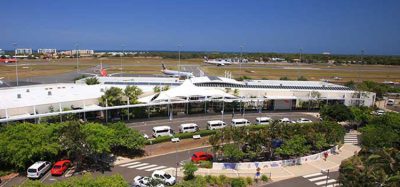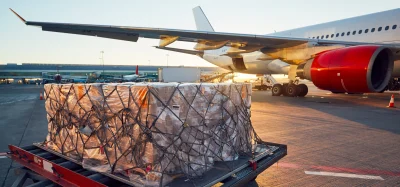“Didn’t they know we were coming?”
Posted: 8 December 2011 | Geraldine Flynn, Manager of A-CDM Implementation at EUROCONTROL | No comments yet
To set the context for this article I would like to state something that is evident to all, that causes huge problems for everyone, and which, for a long time there was no effective remedy. Flights are delayed (for perfectly legitimate reasons) and cannot be ready to depart at their scheduled times, but this information is not relayed to many of the people who should know.
It is likely that you are already aware of Airport CDM and have an idea of what it is about. For those of you who don’t know what it is, let me put it simply; A-CDM makes the turnaround process of a flight at an airport as efficient and as predictable as possible. The core of A-CDM is information sharing between airport partners. Surely information is shared at every airport every day you may ask? No, it is not. I am certain that many of you will have experienced the effect of not sharing information. Here are a few examples: your flight pushed back from the gate before scheduled departure time, there was no long delay waiting at the runway for take off, and, at the destination airport you did not go around in a holding pattern. You land 15 minutes early and arrive close to the parking position. Great! Then comes the dreaded announcement from the flight deck; there is another aircraft parked in the stand and it is not ready to leave. In fact, the other aircraft cannot depart the stand for at least another 20 minutes. By the time you finally disembark, your ‘15 minutes early’ arrival time has been swallowed up and you are late. Or, you land on time, arrive at the stand but this time there is no one to operate the air-bridge, or, you arrive on time at a remote stand but there is no bus to get you to the terminal. Conversely, you look out the window and see empty aircraft stands surrounded by perplexed looking ground services staff. I could go on, but I’m sure you get the idea and have your own experiences.
To set the context for this article I would like to state something that is evident to all, that causes huge problems for everyone, and which, for a long time there was no effective remedy. Flights are delayed (for perfectly legitimate reasons) and cannot be ready to depart at their scheduled times, but this information is not relayed to many of the people who should know.
It is likely that you are already aware of Airport CDM and have an idea of what it is about. For those of you who don’t know what it is, let me put it simply; A-CDM makes the turnaround process of a flight at an airport as efficient and as predictable as possible. The core of A-CDM is information sharing between airport partners. Surely information is shared at every airport every day you may ask? No, it is not. I am certain that many of you will have experienced the effect of not sharing information. Here are a few examples: your flight pushed back from the gate before scheduled departure time, there was no long delay waiting at the runway for take off, and, at the destination airport you did not go around in a holding pattern. You land 15 minutes early and arrive close to the parking position. Great! Then comes the dreaded announcement from the flight deck; there is another aircraft parked in the stand and it is not ready to leave. In fact, the other aircraft cannot depart the stand for at least another 20 minutes. By the time you finally disembark, your ‘15 minutes early’ arrival time has been swallowed up and you are late. Or, you land on time, arrive at the stand but this time there is no one to operate the air-bridge, or, you arrive on time at a remote stand but there is no bus to get you to the terminal. Conversely, you look out the window and see empty aircraft stands surrounded by perplexed looking ground services staff. I could go on, but I’m sure you get the idea and have your own experiences.
Whilst this is indeed irritating for you and me as a passenger, imagine how it is for the staff involved in all the services required to meet this flight who weren’t where they should have been because not all of them had the latest information? On one occasion I landed two hours late at a major European airport. On arrival at the gate no-one was available to operate the air-bridge and we were informed of a further delay of 40 minutes. A fellow irate and very redfaced passenger spluttered with disbelief; “How can this be? Didn’t anyone know we were coming?” I considered explaining; “Well, sir, yes and no. Of course they all knew we were coming but we were late leaving and some of them knew that and some didn’t, and finally they were all working to different estimates. The one with the most up-to-date information doesn’t always pass that information onto, well, to anyone else.” Wisely, I kept silent.
Co-ordination and updates on the progress of a flight are implicit between all air traffic service units but, co-ordination and information exchange between all services at an airport (including between air traffic service providers and airport services) is quite a different story.
The A-CDM principle is that information sharing is good, but shared information is only useful if there are clear rules and procedures to make sure that the right information gets to the right person at the right time. The collaborative decision making part of A-CDM is based upon the simple premise that if you tell all your partners about your situation they will take it into account, and any subsequent operational decision will fit your needs and theirs. So how is this information used and how does it make things better?
A-CDM brings a range of quantifiable benefits, including a better use of resources that can be directly linked to A-CDM elements such as Target Off Block Time (TOBT), and Target Start up Approval Time (TSAT). For example, the average buffer of time allocated for a pushback truck to be available for a flight is estimated to be around 15 minutes, the actual process takes just five minutes. If ground services have an accurate time at which the aircraft will be ready to go off block (TOBT) the pushback time window allocated to a single flight could be reduced by two thirds. Extrapolate that saving over time and over every pushback operation at an airport and you begin to see the potential for significant cost savings. For the airlines, more accurate take-off information in the TOBT can reduce apron and taxiway congestion. Less fuel is burned reducing cost and emissions. The TOBT gives the network a better take-off time window allowing time buffers to be reduced leading to better slot use and reduced slot wastage.
Getting the aircraft from the apron to the runway efficiently, and in the right order for departure, is another A-CDM element called TSAT (Target Start up Approval Time). TSAT pre departure sequence gives air traffic controllers the possibility to optimise the order in which aircraft arrive at the runway. TSAT is a time provided to the pilot by ATC and is a notification of the time at which the pilot can expect to receive engine start up approval. The TSAT time takes account of the TOBT and the traffic situation and it is optimised to the runway departure order. In short, for the controller, the TSAT provides an optimised start up sequence for all departing flights and replaces the ‘first come first served’ principle. The controller retains the responsibility for fine tuning the departure sequence for the runway, but the TSAT process prevents aircraft being in the wrong position in the queue. As a result, the TSAT reduces queuing times at the runway while allowing the controller to maintain a high runway utilisation. The airport operator and the ground handling companies use the TSAT to plan and provide their services to get a flight ready for departure and off stand.
Getting the ground resources at the right place at the right time is a necessity at all airports but, the result of bad planning is felt more at larger, more complex airports. At large airports the layout of the infrastructure of runways and taxiways can cause significant differences in taxi times for aircraft getting to and from the runway(s) in use.
The Variable Taxi Time (VTT) element of A-CDM is a set of parameters that describes and distributes accurate ‘taxi in’ and ‘taxi out’ times to all A-CDM partners allowing ground resources to be managed more efficiently and better predictability for the ATM network.
With such clear benefits on offer you may wonder why more airports have not implemented A-CDM? For many years now, around 30 airports have been reporting that they have implemented some aspects of A-CDM locally but, to date, only five airports are connected to the Central Flow Management Unit (CFMU). Part of the problem is that until fairly recently, most large European airports have been operating in a self contained bubble with little or no consideration of how they fit in the overall network, or with consideration of the impact of their operations on the network. But it is not all one sided; equally, the ATM network only recently turned its attention from en-route airspace to the airports.
Frustratingly, at some large airports where the local A-CDM is sufficiently mature to be connected to the CFMU, the final connection process is hampered by an attitude of ‘uniqueness’ and a refusal to implement one or more milestones of the A-CDM process because ‘we are not like any other airport’. In reality, apart from differences in local infrastructure the large European airports have more in common with one another than differences separating them. Continuing to work in isolation and at the same time expecting a flexible service from the ATM network based on plans made many months in advance is just not going to happen. Airports wishing to connect to the network must realise that standardisation of parameters defining when and how DPI messages are sent to the CFMU is a must. The CFMU cannot continue to connect airports to the network on an ad-hoc basis and with individual parameters. Likewise, as more airports connect to the network and better data is available the CFMU will be able to respond to airlines’ needs in a more flexible and dynamic manner.
Airport resources are very different from those of the network. Or are they? Consider a flight on the ground at the parking stand with no passengers. In this state, the flight is not generating income, but neither is it cost negative. While at the stand, the flight is incurring charges and is using the primary resources at any airport – space and services. Similarly the ATM network and air traffic control authorities have to manage their scare resources of space and services by making assessments and predictions on what space will be occupied by which aircraft, at what time and for how long. Now wouldn’t it be nice if airports and the network could manage the allocation of their respective spaces and services together? After all, we serve the same users. If we are to manage the space used by aviation in a coherent, efficient and environmentally positive way, flight situation awareness data must be provided on the ground as it is in the air.
It is not true to say that all airports in Europe need to be connected to the network to operate A-CDM. It is a question of scale. Local A-CDM airports may achieve increased efficiencies and gains in the short term, but a local A-CDM will not sustain growth and expansion in isolation from the network, no matter how well things operate at a local level. But if that is enough for individual airports why not leave it at that?
What was once a theoretical concept is now fast becoming a necessary reality for larger airports in Europe. Legal requirements to reduce emissions save fuel and improve performance and efficiency exists within ATM, it is only a matter of time before similar requirements will be placed upon airports. Air traffic control services and the ATM network are under increasing pressure from airlines and airports to provide a more dynamic and responsive service to everyday events that can cause a delay or a change to the planned schedule. This dynamic response can only be provided if ATC and the ATM Network know the ‘real’ time when the aircraft will be ready to depart and provide alternatives based on a realistic planned profile of the entire flight. But beware; A-CDM won’t solve everything. Passengers will continue to fail to show up at the departure gate, technical problems will arise and all the other unforeseen daily events will continue and delays will occur. But a system with accurate information can change and adapt to real world and real time demands. Perhaps then we can banish forever the question: “Didn’t they know we were coming?”
About the Author
Geraldine Flynn has extensive ATM experience; beginning as an operational air traffic controller, a controller training officer and controller and competence assessor and rating/licence examiner. She has experience in airspace design, the design and management of real and model based simulations and safety, complexity and capacity studies. Geraldine joined EUROCONTROL in 1993. Prior to this, she was NATS Air Traffic Operations Manager responsible for all operational matters for all UK area air traffic control centres.
Her broad regulatory experience includes the oversight and supervision of ANSP, development and assessment of unit SMS, unit safety cases, unit training and controller competence schemes. Before joining the Airport Unit, Geraldine was part of the Safety Regulatory Unit where she conducted ESIMS audits and managed the SRC Safety Case Review Process for ADS-B applications. Her new role in the airport unit is to drive and manage the A-CDM Implementation Team in their task to accelerate the implementation of A-CDM in airports across Europe.
Join our free webinar: Transforming Airport Security – Innovation, Impact, and the Passenger Experience
The landscape of airport security is undergoing a profound transformation, driven by evolving threats, technology, and passenger expectations. This webinar focuses on how AtkinsRéalis has been transforming security processes at some of the world’s busiest airports with smarter, more adaptive solutions.
Date: 4 Nov | Time: 14:00 GMT
REGISTER NOW TO SECURE YOUR SPOT
Can’t attend live? No worries – register to receive the recording post-event.
Issue
Related topics
Airport Collaborative Decision Making (A-CDM), Airside operations


















